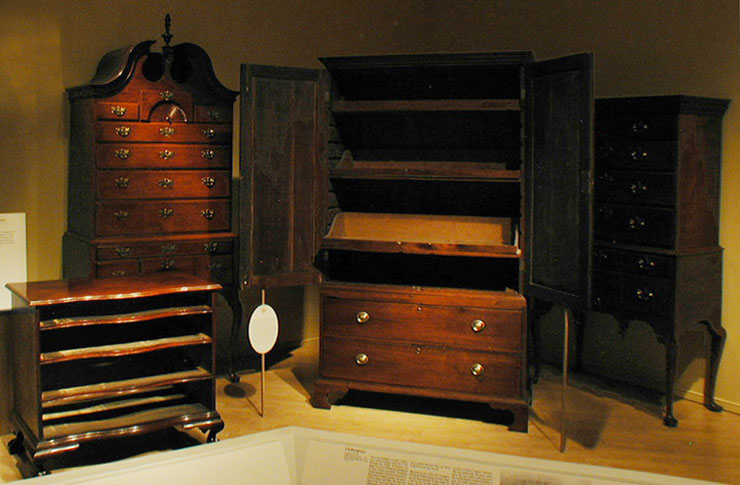

| Clothespress Rookesby Roberts Williamsburg, Virginia, 1795 Black walnut with yellow pine Catalog no. 123 This is an example of a basic clothespress format popular from the 1750s through the 1820s. It features an upper case with sliding trays designed to store folded garments. Predating clothes hangers, such trays held everything from women's gowns and men's suits to shirts and shifts. The trays are high at the back and sides to prevent folded garments from falling off as the tray is pulled forward. They are short at the front for easy access. This press is one of the few examples of Federal Williamsburg furniture that can be documented. It was made in 1795 for St. George Tucker, whose house still stands on Market Square. The original bill of sale, signed by local cabinetmaker Rookesby Roberts, survives in Tucker's papers. Structurally and stylistically, the press epitomizes the way makers and patrons in the coastal South remained faithful to neat and plain furniture even after they became aware of the newer neoclassical style. |
| High Chest of Drawers shown on right |
| High Chest of Drawers shown left |
| Elegant high chests continued to be made throughout New England during the third quarter of the eighteenth century. Still stylish in the eyes of many northern colonists, high chests nevertheless were modeled on a design that by 1775 had been out of favor in London for a half-century. When considered in contrast to the contemporary southern preference for the more modish and double chest forms, these evocative artifacts speak strongly about the diverse nature of American regional identity in early America. |